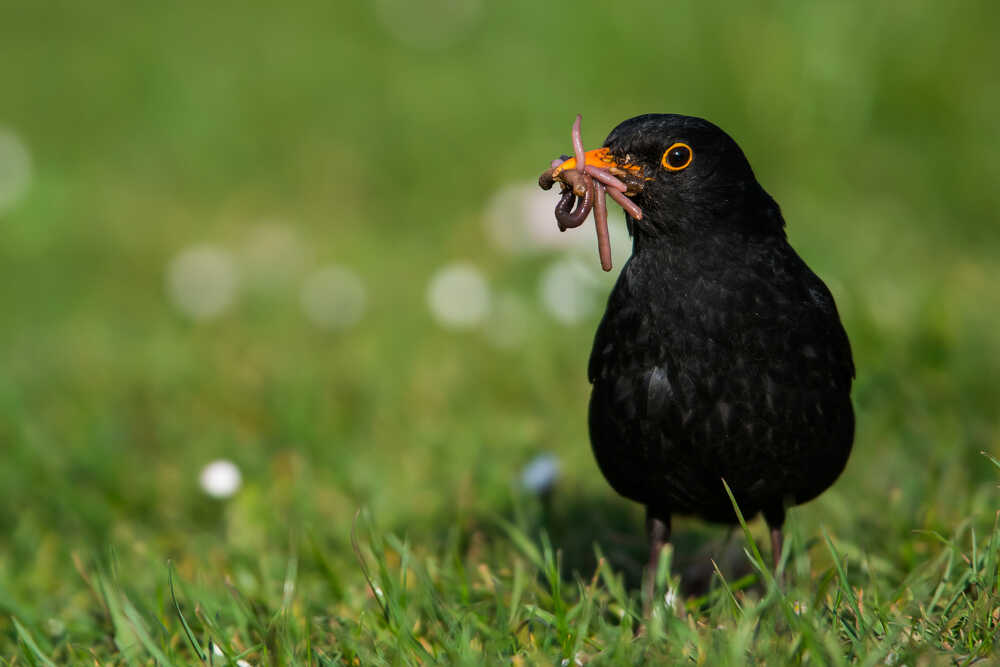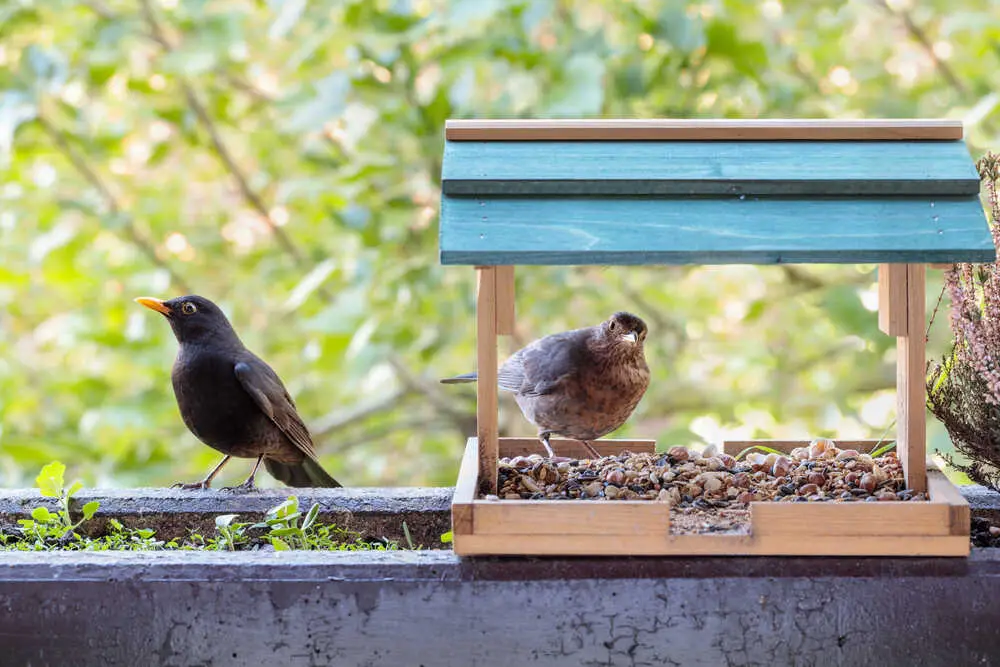In some bird species, very little separates the male and female; in others, the birds look like polar opposites. The differences between male and female blackbirds beggar belief – only one of them is a black bird!
The male of the species is the most instantly recognised as a blackbird due to his glossy black feathers. His bright orange beak and rings around his eyes ensure there’s no mistaking him for any other bird.
The female is mostly brown. Her chest is often lightly mottled in fairer, dull shades with a pale patch at her throat. Her beak is a deep yellowish-brown colour.

Table of Contents
Are juvenile blackbirds black?
Regardless of their sex, juvenile blackbirds share the same colouring. They are shades of brown, with pale streaks around the neck and shoulders and deeper brown spots on the chest. These markings are the reason that they are often confused for thrushes or adult female blackbirds.
As they fledge the nest before they can fly, it is commonplace to see a juvenile hopping along the ground, following its parents in their quest for food.
With all three family members in such close quarters, it is easy to identify the differences between male and female blackbirds.
Juveniles remain these colours until moulting season – the period when they lose their feathers in readiness for their adult ones.
Partial albinism
Both male and females can suffer from partial albinism; blackbirds are the most common species that the disease affects.
Instead of their natural-coloured plumage, some adult feathers are white. Sometimes there are just 2 or 3 random feathers; at other times there are clumps in different areas of their body.
It has no adverse health effects on the birds, but they are often shunned by other blackbirds. Sadly, it also makes them more prone to predation, especially males, where the difference is most noticeable.

Blackbird’s song
Aside from physical differences, male and female blackbirds have different voices.
The male has a loud melodious song. Google it if you’re unsure; I am certain that you will have heard it on several occasions.
He sings most during the breeding season, March to July, often to attract or impress a mate.
His song has a slow, rhythmic tempo, but should he be disturbed it changes to a loud, abrupt “tchook-tchook” sound.
At dusk, his song softens to a gentle chink-chink sound.
The female blackbird follows many other female passerines; they rarely sing.
That isn’t to say she never sings, as many birdwatchers recall hearing a gentle humming sound when there is no other bird around, just a blackbird hen.
She isn’t totally silent; breeding pairs have a gentle chatter to communicate with one another.
Male and female behavioural differences in the breeding season
- Male blackbirds are anti-social birds and develop a territory during their first year. They use song and a courtship dance to attract and invite a female inside its boundaries.
- Females are solely responsible for nest building. Males keep watch over her and his territory as she works.
- When the young fledge, both parents feed the young; with each adult always caring for the same birds.
- The female often leaves the group first, leaving the male in charge. It allows her to focus on her next brood.
Final thoughts
There are many differences between male and female blackbirds, particularly their physical appearance.
I have many blackbird visitors; they enjoy nothing more than foraging through the lawn for some earthworms.
The females always seem to be more outgoing and aren’t at all perturbed if I’m working close by.

I have a very friendly and sociable blackbird pair in my garden.
The female shows no fear of me, and sometimes comes into my outbuilding, where I always keep a stock of live mealworms.
The female is almost as sociable as my Robin, and will take food from a small plate held at arms length, but unlike my Robin she has not yet eaten from my hand.
Blackbirds are fascinating to watch, and the male has a wonderful song, particularly near dusk time.